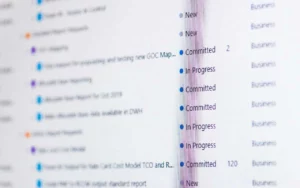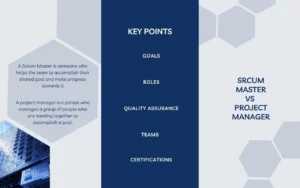Table of Contents
Guide to Overcoming Recency BIAS in Your Retrospectives
So you’ve been running retrospectives. However, a psychological phenomenon can make you immensely better at agile retrospectives. It’s not just fulfilling one of the agile ceremonies. It’s taking part in a simple exercise. Recency bias is a brain phenomenon that affects your behavior.
This means our memories focus on recent events and experiences, and we forget everything else. Hence, your agile processes probably suffer from recency bias since you fail to use appropriate countermeasures. Let’s dive in to know what recency bias is. What are recency error examples? Also, how do we effectively overcome it?

What is Recency Bias?
Recency bias is sometimes referred to as availability bias in behavioral economics. Recency error or bias is common in many judgments, including eyewitness testimony and jury verdicts. This is because it is difficult to suppress the influence of recently held information on our judgments and decisions.
Recency bias is a cognitive bias that causes people to overemphasize recent events when making judgments or predictions. It’s also sometimes called “hindsight bias” or “the law of first impressions.” It makes people more likely to believe that their first impression of something will be their best impression.
In an agile retrospective, recency error can be especially harmful. A retrospective is useful only when it’s based on objective data and not opinion. Recency bias can interfere with this by making it too easy for team members to focus on recent problems and overlook longer-term issues that might be more important to address.
Recency Bias Examples
Examples of recency bias are as follows:
Recency Bias in Investing
It’s a common recency error. Investors often make decisions based on recent news rather than historical data or market fundamentals. Investors affected by recency bias tend to buy when stocks are rising. They don’t buy when stocks are cheap and sell when they are expensive.
Recency Bias in Politics
Politicians who have recently won an election may be more likely to win re-election. After all, voters only remember the last time they voted for a candidate. They don’t consider what could happen if circumstances change between now and the next election cycle.
Recency Bias in Business
Businesses may assume that customers will continue to behave in a certain way based on their most recent interactions. They don’t consider whether other factors are at play (such as a competitor offering a better deal).
How to Overcome Recency Bias in Retrospectives?
In retrospect, the best way to overcome recency bias is to have a broad view of the markets. You must understand the market’s direction, overall volatility, and how it can impact your portfolio.
Have a Diversified Portfolio
Diversifying your portfolio is important. In this way, you are not subject to the effects of a single stock or sector. When you diversify, you spread your money across different sectors and industries, reducing the risk. It would be best if you could get help from financial advisors. They will help you create a well-diversified portfolio.
The portfolio will help overcome recency bias and other biases affecting investors.
Limit Your Time Frame
Recency bias can occur when looking at data over too short a time frame. So it’s important to limit the time you’re looking at when it comes to retrospectives. For example, if you’re doing a weekly retrospective, then limit yourself to only looking back for two weeks or so. It will likely lead you astray from what’s happening in your organization today.
Be Realistic About Expectations
If an investment has performed well over the last few years, it doesn’t mean it will continue doing so in the future. You should always be realistic about your expectations from any investment. Be prepared for any adverse scenario which may happen in the future.
Always Try to Work with What You have in Control
If you want to save money for retirement or invest for your future, focus on what’s within your power — such as how much you’re saving every month and how much interest your money is earning — rather than how much money you lost this month or last year. That way, you’ll see progress over time instead of focusing on past losses or gains that aren’t likely to repeat themselves anytime soon.
Clear Financial Goals
If you don’t have any goals for your investments — e.g., how much money do you want to have in retirement? It can be hard to know what direction to take with your portfolio. Setting clear goals (and revisiting them regularly) will help keep you focused on specific outcomes rather than just reacting based on what’s happening right now.
Hire Financial Advisors
Hiring financial advisors helps you make better financial decisions by providing unbiased advice and information about investment options and the potential risks involved. Also, financial advisors can help keep track of your spending habits, so they’re less likely to run up credit card debt or spend too much money on unnecessary items like clothing or electronics that depreciate quickly after purchase or use up cash reserves rapidly even though they might seem like good investments at first glance.
Keep Yourself Grounded
The best way to fight recency bias is to keep yourself grounded. Don’t let the most recent events or information drown out all other important factors that can help you make better decisions. It’s also important to look back at how your predictions have worked in the past so you can learn from them and improve your forecasting skills for the future.
Look to the Past
Try to avoid falling into the trap of thinking that something that has happened recently will continue to occur in the future. For example, if your company’s earnings are down for two quarters straight, don’t assume they’ll be down for another quarter.
Wrapping it all Up
Because they are challenging to identify in the first place, cognitive biases are tough to account for. For better or worse, they are a part of who we are since we are all human. The team should reflect on the entire sprint during retrospectives, not simply the details they remember best or are most recent.
To acquire the most objective and fair input from your retrospectives, set the stage, encourage reflections for each week, or open-reflections early the next time you do one. Also, use the Scrum Poker tool to manage your teams more effectively.












